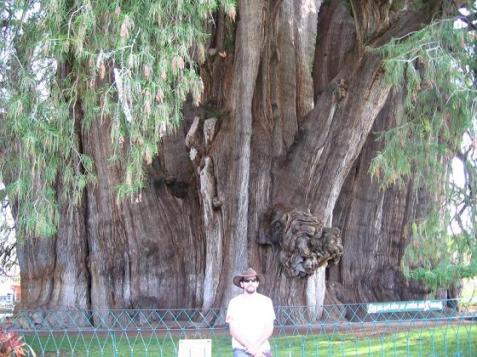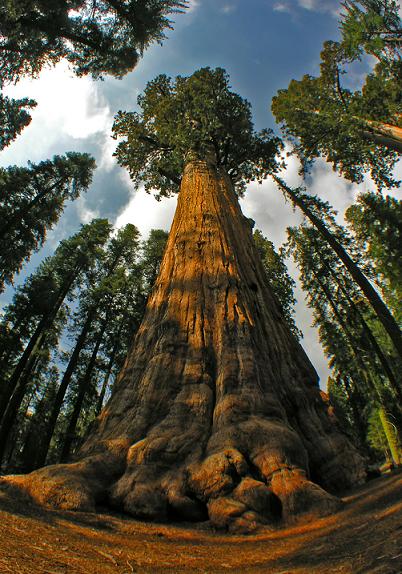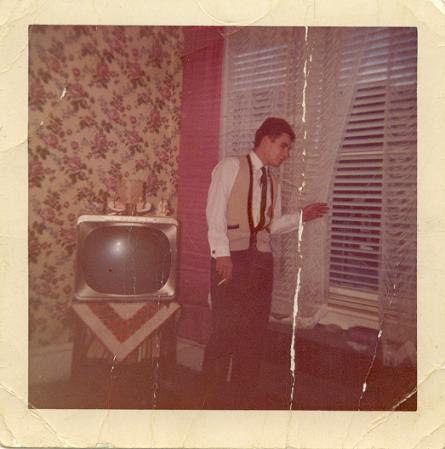The merciless march of time continually surprises me, not due so much to its stealth — rather, due to its ability to blindside me as I watch its approach, wide-eyed, tharn and fearful to move and draw its full attention.

I am nearly done with my first year as a graduate student, and this too is an occasion for no small amount of surprise. I applied for school, was accepted, signed up and attended my first class all in under a month’s time. Talk about breathless…
The thing is, everything I am studying is just so intense and absorbing, and I have hardly a complaint when it comes to sustaining my interest in it all. I can pretty much study anything I want, since libraries and archives encompass every area of human thought there is. Especially archives, as one is dealing very often with primary, irreplaceable personal and institutional documents, the field of study is as large as life itself.
I am currently working on three papers, all due in the coming week and a half. I thought it would be fun to tell you about them…
The first one, for my Internet Publishing class, is concerned with online academic journals and the imminent effect of print-on-demand, networked books and eBooks on access to information as well as prospects for the survival of digital publications. Along the way I’ve read fascinating articles by Tim O’Reilly, John Dupuis (in a guest post to PersonaNonData), and from the 2006 Progress in International Reading Literacy Study (PIRLS) online evaluation data.
One of the more intriguing sites I will be referencing in the paper is co-authored by Lewis Lapham’s Quarterly and the Institute for the Future of the Book, intellectually a sort of follow up to an earlier post on Robotic Librarian about networked books. It’s a digital version of the Iraq Study Group Report that offers a promising new model for publishing which I hope will become a standard formulaic publishing touchstone. The base text of the Iraq report is supplemented by annotations by a “quorum of informed sources (historians, generals, politicians both foreign and domestic) [who] add marginal notes and brief commentaries at any point in the text seeming to require further clarification or forthright translation into plain English.”
Their design is extremely simple and intuitive to use, and I can easily see the format reorganized to accommodate several oceans worth of digitally published materials, both interactive and static, yet informationally challenging and sophisticated. In a recent interview I read with Caroline Vanderlip, CEO of SharedBook, she alludes to a study wherein “Hewlett Packard recently estimated that 53 trillion digital pages will be printed in 2010.” Even if the Hewlett Packard estimate is wrong by half, it’s apparent that our fundamental relationship to information is undergoing a monumental degree of transformation, something that will forever alter people’s core notions of right to access, levels of privacy and confidentiality, interactivity, and timely provision of materials.

My second paper is about Chicago’s 1893 World’s Columbian Exposition, one of the most fascinating concordances of cultural significance in the Industrial Age. This is the paper I alluded to shortly before I jumped the track on my blog posts, which I originally thought to write about Black May in Thailand. For a host of extremely sensible reasons, it was much more practical to work on something I could research in local archives, and there is no shortage of local material or of interested, knowledgeable archivists who were willing to provide me with help in understanding the Exposition. (First and foremost, many thanks are due to Newberry, and to the Chicago Historical Society)
Certainly Eric Larson’s The Devil in the White City was also invaluable, largely by helping me to simplify the abstract time-line that existed in fragments in my mind, untethered to any but the most fleeting islands of context. As I am not a native Chicagoan, and not a natural historian, it’s hard for me to easily grasp historical context. It’s a fight every time (unless it’s about the advent of mechanization, which for some reason has interested me since I was 12 or so, no kidding…). Luckily the Exposition tells such a compelling story, and I did not want for a body of available narratives. I’ve found that there are at least 200 books in English about it, and more in German, French, Japanese and French besides. Once I am done with my paper, I am going to condense it into a post or two, there’s just so much to tell…

The first Ferris Wheel (built with over 1 million pounds of steel), the introduction of Cracker Jacks & Cream of Wheat, very likely the origin of 20th century freak shows, and arguably even of Disney Land… Check out this online tour in the meantime, until I have time to cobble together my histories.
My third paper is the most intimidating of them all, and the most far-reaching. I am likely going to stretch it out into an independent study for my final Spring semester; in fact, if all goes well, I will turn it into both an address to professional archivists in June as well as a manuscript for a non-fiction book.
I am writing about unwanted histories, and the ways in which individuals and societies react toward their destruction/burial/ exposure/alteration. I am starting my story with the age of the armarius, the monks who were responsible for the preservation and provision of books from the 8th century onward. At times the armarius was called upon to destroy a given work which was officially proscribed by the church — a conscientious book keeper might scrape the offending author’s name from a vellum sheet and substitute an accepted name, or perhaps would find it easier to bind the pages with several other works and just not record the condemned works’ existence; both were documented practices. I hope to end the paper with Executive Order 13233, Bush’s attempt to prevent the accession and provision of Presidential papers that were previously protected as public property under the Presidential Records Act. Honestly, though, every President whose records fell under the aegis of the PRA (meaning everyone since 1978) tried to circumvent its scope and effect, Bush was merely the most successful in doing so. Here’s hoping that HR 1255 eventually passes through with flying colors…

In the meantime, please do wish me luck. I have yet to write about 25 or 30 pages, and to prepare my three presentations. Seriously, how can it possibly be December already?




 Posted by Vaucanson's Duck
Posted by Vaucanson's Duck 

















